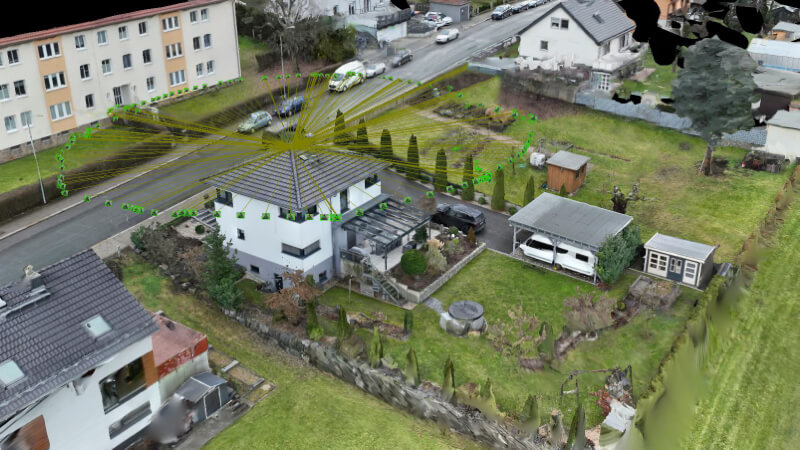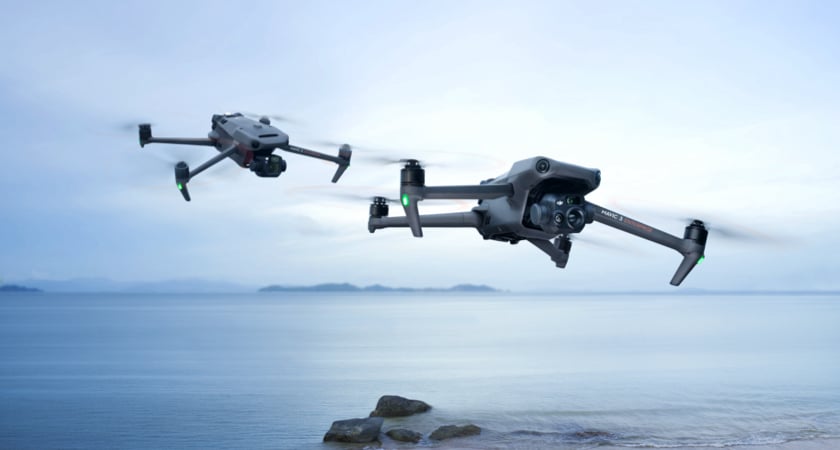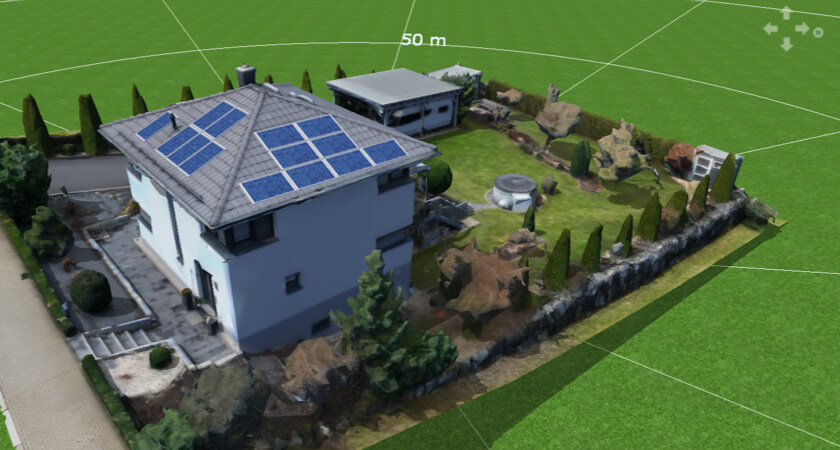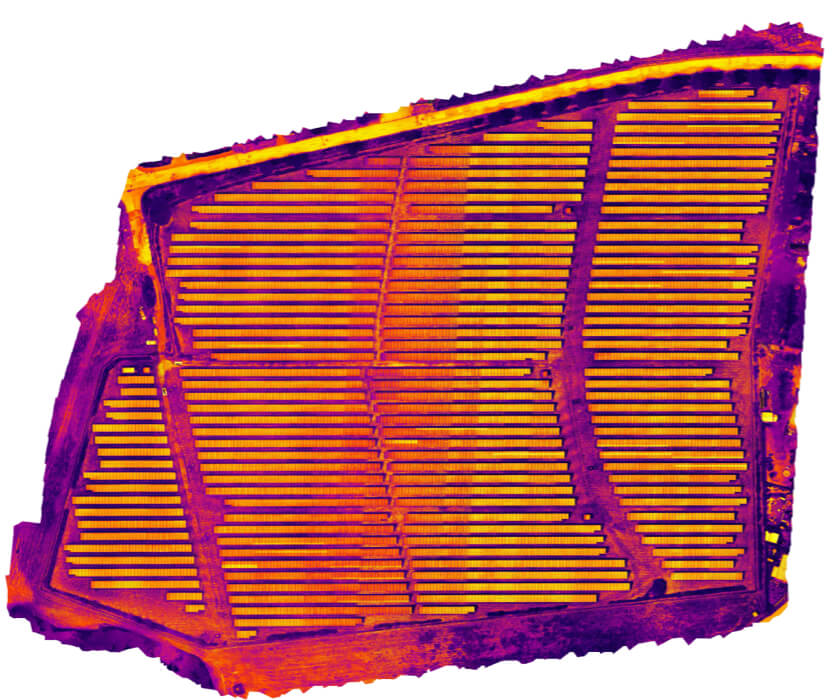Renewable energy adoption is on the rise across Europe. Photovoltaic capacity alone increased by 47% in 2022. The German government is leading the way with an ambitious target for renewable sources to account for 80% of the nation’s power consumption by 2030. A combination of subsidies, new regulations, and the increasing economic feasibility of green energy projects is aiding that shift.
It’s in this context that Germany’s residential solar market is booming. According to Airclip, a Dresden-based company that’s been providing enterprise drone solutions in verticals ranging from surveying to renewable energy since 2014, it’s just the beginning. From installation startups to major energy companies, the German residential solar market is seeing unprecedented demand.
Lucas Günther, founder and managing director at Airclip, says solar customers now account for a significant portion of the drone solutions provider’s revenue.
“Around 85% of roofs in Germany don’t have solar PV installed. There’s a huge addressable market with high potential and we are only scratching the surface at the moment.” - Lucas Günther, founder and managing director at Airclip
With plenty of government support available thanks to Germany’s Energiewende transition towards being a low-carbon, nuclear-free economy, it’s becoming cheaper for homeowners to install PV systems. A shortage of necessary materials that stalled progress during the pandemic is also beginning to clear. Conditions are perfect and Günther expects solar growth to continue at an accelerated rate through 2023.
As the clamor for solar PV installations grows, operators in Germany have begun to embrace drone technology in an effort to streamline operations and work smarter.
The challenges faced by solar installers in Germany & beyond
On top of mounting project loads, solar installers have consistent challenges to contend with.
The first is time. Manual roof surveys can take several hours. Every relevant area has to be measured and accounted for before the customer can be provided with a detailed quote and installation is given the green light. Because these preliminary surveys take so long, installers are limited in the number of quotes they can provide and projects they can secure.
The second challenge is accuracy. The hard work that goes into a manual survey can easily be undermined by a missing measurement or a single mistake. Remeasuring involves more site visits and more time - and that’s assuming the oversight is noticed before it becomes an expensive headache.
Last but by no means least is the issue of safety. Although solar install crews are familiar with working at height, nobody should be exposed to more risk than is necessary. Accidents happen and for small solar businesses, losing staff to injury can seriously impact daily operations.
Transforming residential solar installations with drones
Thanks to Airclip, solar PV installers across Germany are developing new best practices to work smarter, smoother, and safer. And you guessed it: DJI drones are part of the equation.
Before we get explore Airclip’s cloud processing solution, let’s take a closer look at how those three main challenges - accuracy, time, and safety - are addressed with drone technology.

Airclip’s cloud processing solution turns aerial data into accurate models for solar system installations.
Precision from above
When you survey a roof using a drone, you can gather accurate measurements and effectively eliminate the risk of human error. Any data captured can be looked over at a later date, without the need for a second survey. Avoiding mistakes during the planning phase can lead to thousands of Euros’ worth of savings.
Drones that have RTK capabilities, such as the DJI Mavic 3 Enterprise, provide the centimeter-level precision you need to turn data into detailed 3D models.
 The Mavic 3 Enterprise can provide the centimeter-level precision you need to turn aerial data into detailed 3D models.
The Mavic 3 Enterprise can provide the centimeter-level precision you need to turn aerial data into detailed 3D models.
Carrying out solar PV surveys 10x faster
Surveying speed is arguably the biggest driver of drone adoption among solar installers. Being able to work faster saves costs across the board and allows installation professionals to quote for more projects. Figures from Airclip’s customers suggest that drones are 10x faster compared to traditional roof surveying methods. Measurement tasks that previously took a whole day can now be completed in just half an hour. And that’s before you factor in the time saved by preventing human error and reducing accidents at work. More surveys, more quotes, more projects.
Less risk, fewer accidents
Just as with industrial inspections, public safety, and surveying more broadly, gathering data from above tends to be far safer when compared to the manual approach. The same goes for solar inspections. When taking measurements, drones reduce the need for people to climb on top of roofs and work at height.
Solar installation inspections with Airclip
Airclip’s customers range from single operators to large renewable energy companies. On top of providing DJI hardware, training on its use, and assistance navigating regulatory hurdles, Airclip has built a cloud processing platform that turns aerial data into accurate 3D models.

Solar installers can fly their measurement missions, upload their data, pay a small per-project fee and receive a detailed 3D model that can be used to present clients with quotes and plan new projects.
 Airclip’s 3D models can be used to support the planning process and for pitching to potential clients.
Airclip’s 3D models can be used to support the planning process and for pitching to potential clients.
“We connect solar professionals with the right hardware, explains Marc Hufken, Airclip’s Sales Manager for Southern Germany, Austria and Switzerland.
“We run workshops on how to use the drone and how to fly the roof. They can then collect all the data on their own, upload the images to our cloud processing service, and within 24-48 hours, receive an exact 3D model alongside other PV planning tools where you can integrate and plan your panels. With drones, solar installers no longer have to go up to the roof to do an estimation or a measurement. It's a really easy, fast, accurate, and secure way to get the information you need.”
Solar professionals discuss their experience with DJI drones
The majority of Airclip’s solar industry customers have upgraded from the Phantom 4 RTK to the new Mavic 3 Enterprise, which is portable, easy to fly, cost-effective, and - unlike DJI’s consumer drones - highly specialized for surveying missions.
Many also use one of DJI’s thermal drones, such as the M3T, to produce a guarantee following installation. With infrared imaging, crews can do a quick inspection of the panels to prove they are operational from day one.

Below are some insights on the difference adopting drone technology has made to solar installers across Germany.
|
How to Consider Drones, |
|
|
Time Saved |
|
|
Time to positive ROI |
|
|
Financial savings |
|
“With the drone we can see and survey everything”
Tony Friedrich, Technician at Energiekonzepte Deutschland.
Using DJI drones has been a huge relief for us. Measurement tasks that previously took us a day to complete, we can now carry out in 20-30 minutes, often achieving more accurate results than with the laser. With the drone we can see and survey everything from the air, including objects we would have had to survey individually or might even have overlooked when conducting the task manually. The drone footage allows us to create 3D models that we can include in our project reports, which is a massive advantage.
“It’s transformed the process of solar installation planning”
Kenny Breuer, Master Electrician at Staudt.
Using drones has transformed the process of solar installation planning. We only create execution plans with the drone now as it’s more accurate than before. The time savings compared to manual surveying is huge. Since we no longer have to climb roofs, the point of safety is also very important. The technology is very reliable and can always be safely handled, even in challenging conditions. It’s now been 200 projects and counting, and with the number of installations we implement the investment paid for itself within a few months.
“Better planning helps us avoid mistakes”
Sven Dönnewald. Photovoltaic Systems Appraiser at Ewenso.
With drones, we can generally calculate plans more accurately. Measurements are also faster and much safer because the roof space no longer needs to be entered. It's so good that you can't even grasp it! After about 10 measurements we've paid off the equipment. Even more importantly, better planning helps us to avoid mistakes - especially for large PV systems where planning errors can easily lead to extra costs of €4,000 or more.
Embrace drone technology for your solar business
If you’d like to explore how DJI drones can enhance your residential solar PV system planning, contact Airclip to get expert guidance on the options available.


.png?width=300&name=HS%20-%20Featured%20Images%20(7).png)
-1.png?width=300&name=HS%20-%20Featured%20Images%20(5)-1.png)
.png?width=300&name=Stormpoint%20(1).png)
